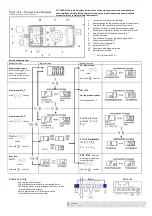Reviews:
No comments
Related manuals for ST-NIC DP83902A

SC22-3
Brand: Banner Pages: 15

PCS Series
Brand: bar Pages: 2

RZN 4503-T
Brand: D+H Pages: 36

HEMC
Brand: D-Box Pages: 4

RZN 4416-M
Brand: D+H Pages: 36

Key Control
Brand: HandyTrac Pages: 14

STA
Brand: TA Pages: 6

M16/RMO NA/NC
Brand: Madas Pages: 6

EVP/NC
Brand: Madas Pages: 11

Cricket
Brand: R82 Pages: 89

V-2000
Brand: Valcom Pages: 6

ZERO.SAPE
Brand: fadini Pages: 28

VESTA
Brand: GEA Pages: 47

F5S-IQ Series
Brand: D&R ELECTRONICS Pages: 12

LAVADO
Brand: Kunert Professional Pages: 29

NAUCON-40
Brand: Nautronic Pages: 6

CircuitSpy 80
Brand: Redbusbar Pages: 12

Star FINGER006
Brand: IDTECK Pages: 51
